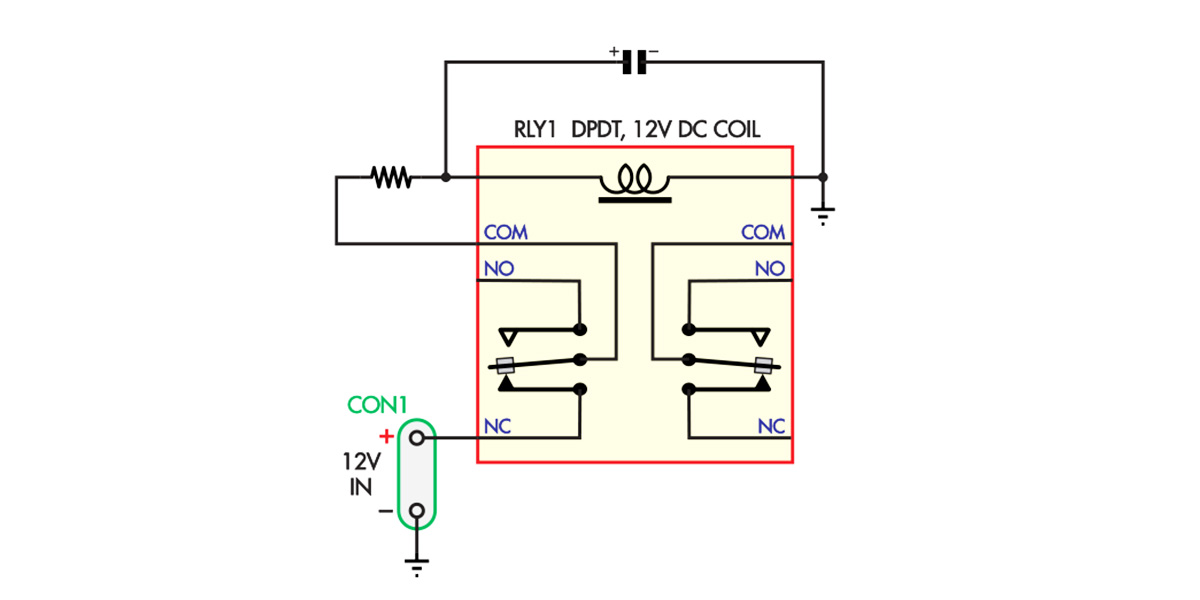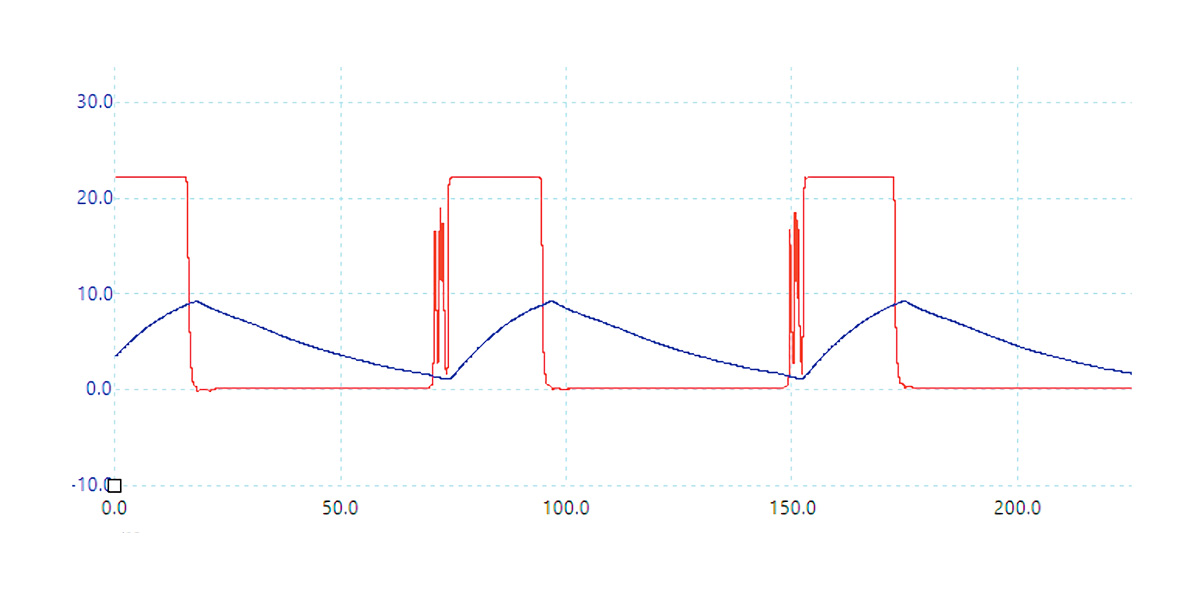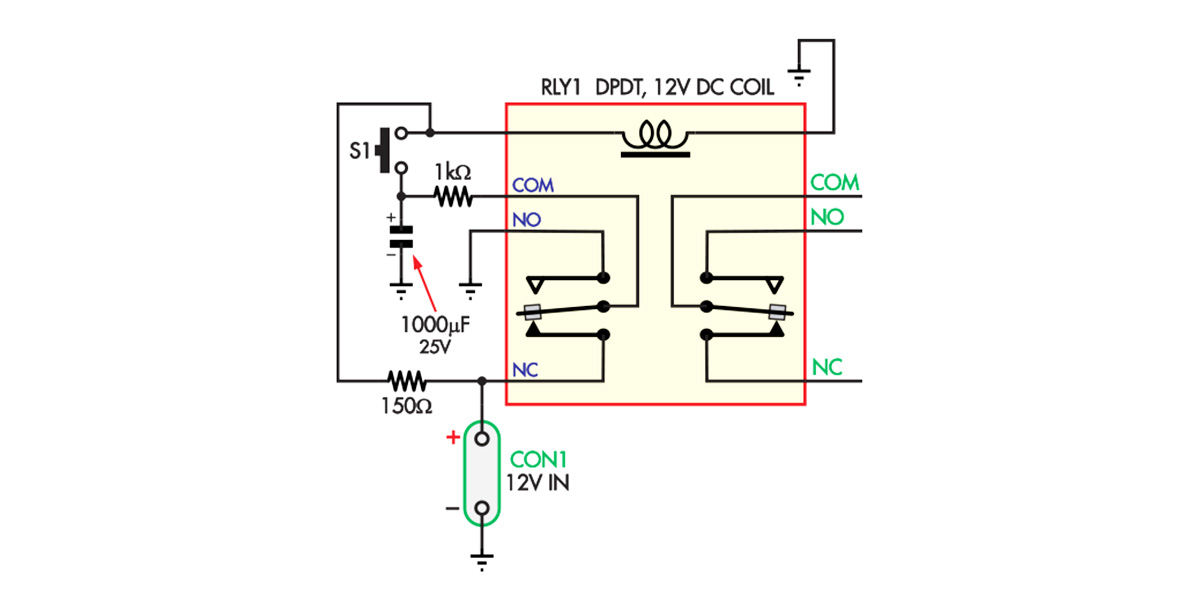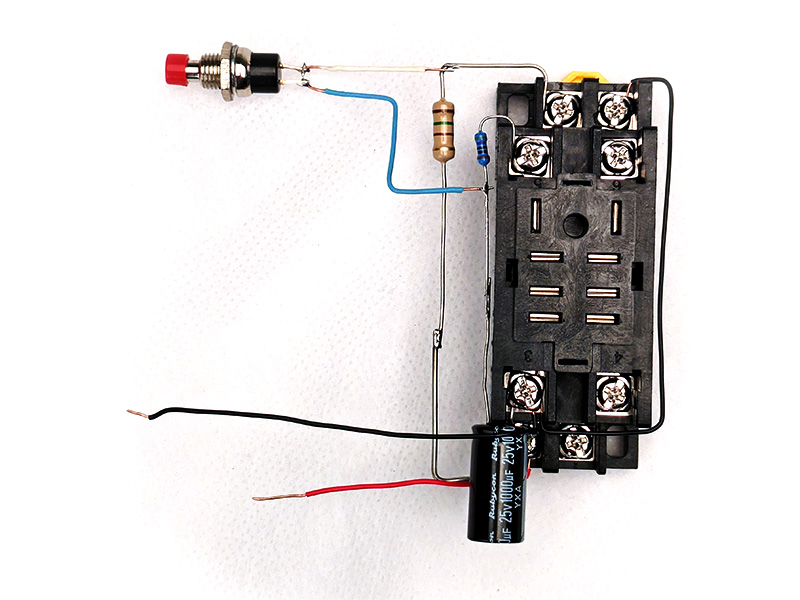How to Build a Self-Toggling Relay
Difficulty
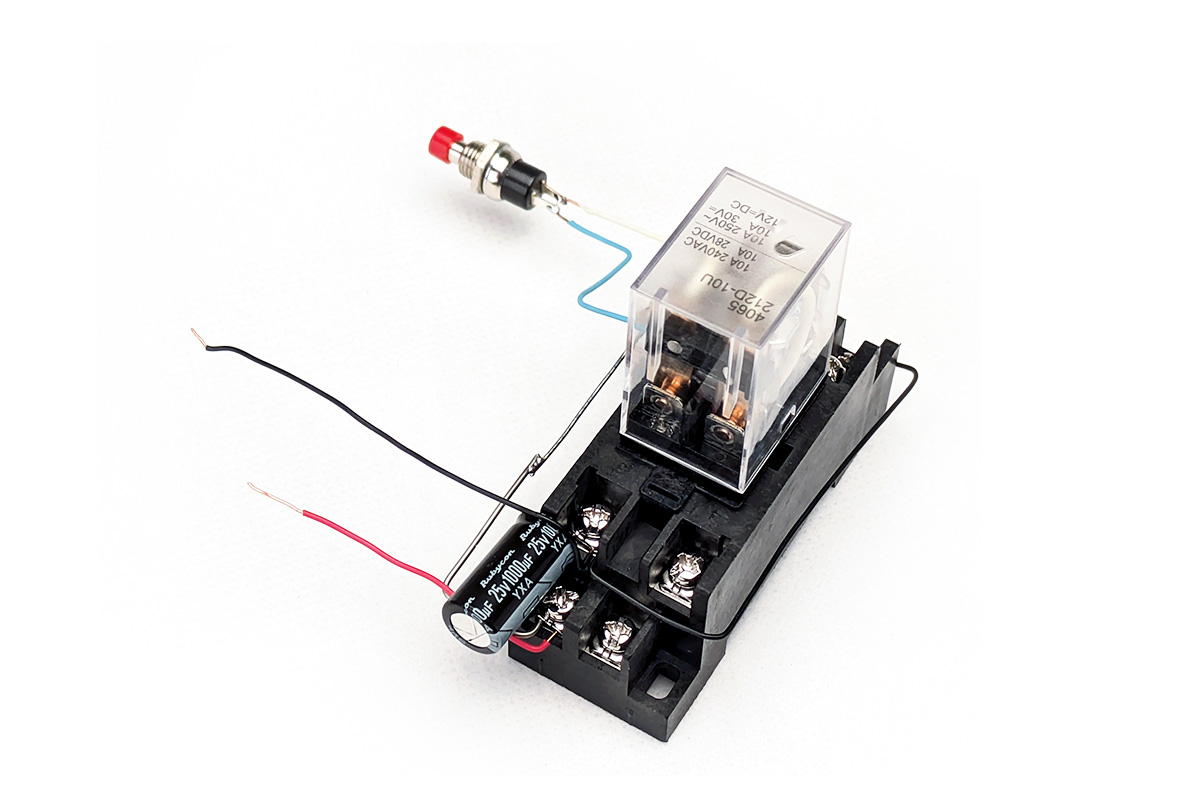
Summary
This design achieves that goal using just one DPDT (double-pole, double-throw) relay, a common type. It provides a free set of ‘dry’ contacts, meaning they are not connected to any circuitry or a power source. You are free to do whatever you want with them, within the limits imposed by the relay’s ratings.
It might be possible to build this circuit using a single-pole (SPST) relay if the thing you wanted to switch was completely independent of the relay’s power source. Still, DPDT relays are inexpensive, and using a free set of contacts is safer.
Materials Required
| 1 | 12V DPDT Power Relay - 10A 240VAC/24VDC Contacts | SY4065 |
| 1 | 12V DPDT Power Relay - 10A 240VAC/24VDC Contacts | SY4065 |
| 1 | Red Miniature Pushbutton - SPST Momentary Action 125V 1A rating | SP0710 |
| 1 | 1000uF 25VDC Electrolytic RB Capacitor | RE6230 |
| 1 | 1k Ohm 0.5 Watt Metal Film Resistors - Pack of 8 | RR0572 |
| 1 | 150 Ohm 1 Watt Carbon Film Resistors - Pack of 2 | RR2554 |
Similar projects you may be interested in


